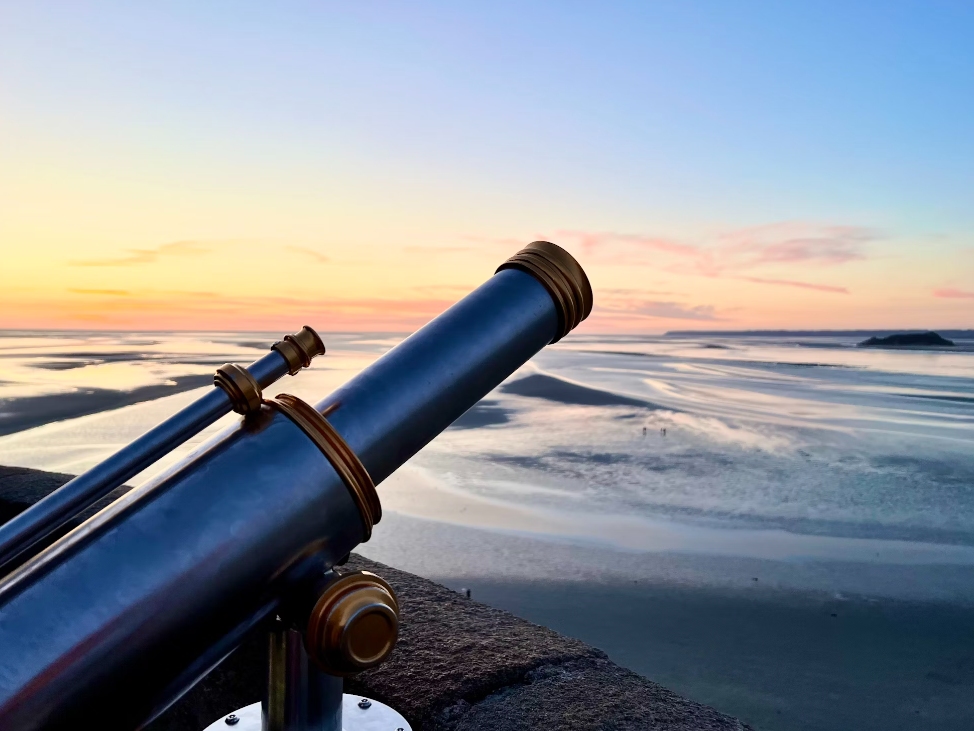
Uh oh! Is your telescope showing nothing but black when you try to look at the stars?
Don’t worry, this happens sometimes! Especially if you are a beginner.
In this post, I’ll help you figure out why your telescope is black, and get you seeing cool space stuff in no time! It’s easier than you think!
There are 3 reasons your telescope is black. These are:
One of the main reasons why you might see nothing but darkness when looking through a telescope is that it’s out of focus.
Also Read: Can you leave a telescope outside

Getting the focus right is essential for getting clear, sharp images of celestial objects.
Every telescope has a focuser knob that you use to adjust the distance between the main mirror or lens and the eyepiece. This brings objects into focus.
If it’s not set up correctly, you’ll end up with a black view no matter where you point it.
The second biggest reason is using an eyepiece with too much magnification power.
Beginners who are eager to “zoom in” often start with high magnification.
The problem with starting off on high magnification is that it greatly reduces the field of view, which makes it extremely difficult to locate and center objects.
With such a narrow visible area, chances are you’re just pointing into blank sky space.
That’s why it’s best to always begin with your telescope’s lowest power eyepiece.
The finder scope is a small telescope attached to the main telescope that helps you aim.
If it’s not properly aligned to match where the telescope is pointed, you’ll have no luck at all seeing anything except black.
Also Read: Can you zoom in on a telescope
Plus, most telescopes require periodically re-aligning or calibrating the finderscope aftersetups.
Now that you know what makes your telescope black, lets go over what you should do:

The first thing to check is whether your telescope is working properly during the day.
Take it outside and try viewing distant trees, buildings or any stationary objects. If you can see them clearly, then you know the problem isn’t with the telescope optics itself.
The issue lies in finding and centering objects in the night sky.
Always start with your lowest power eyepiece, something around a 25-30mm focal length.
This gives you the widest possible field of view, so it’s much easier to locate objects.
Once you’ve centered your target, you can gradually increase magnification by switching to shorter focal length eyepieces, like 15mm or 10mm.
Oh and avoid using a correcting prism or an erecting lens, as these can reduce the quality of the image when observing at night.
Instead, get accustomed to the view directly through the telescope optics.
But it will appear upside-down or mirror-reversed.
BTW, check out our 80mm High-Definition Monocular Telescope for Deep Space
Most telescopes have knobs near the eyepiece that adjust the focus.
Find this knob (labeled “focus”). Start with a bright object like the Moon and turn it slowly while peeking through the eyepiece.
You’ll see a blurry circle sharpen, or edges appear. Keep turning until the view looks clear.
You also need to properly align your finderscope.
During the day, set up your telescope and choose a distant stationary target, like the top of a tree or a chimney, at least 300 yards away.
Make sure it’s visible through your finderscope’s optics or red dot and center it precisely.
Next, look through the telescope’s low-power eyepiece (around 20mm or higher focal length).
If the object isn’t centered in the eyepiece view, you’ll need to adjust the finderscope’s alignment screws until it is.
This process aligns or “squares” the finderscope with the telescope’s optics.
Here are a couple of other things you need to consider:
City lights can make it difficult to see fainter objects.
If possible, try observing from a darker location.
And start with easy targets like the Moon or bright planets like Jupiter or Venus. Fainter deep sky objects require more experience and darker skies.
Keep in mind that some objects are only visible at certain times of night.
For example, you won’t see faint galaxies during the day.




Leave a comment